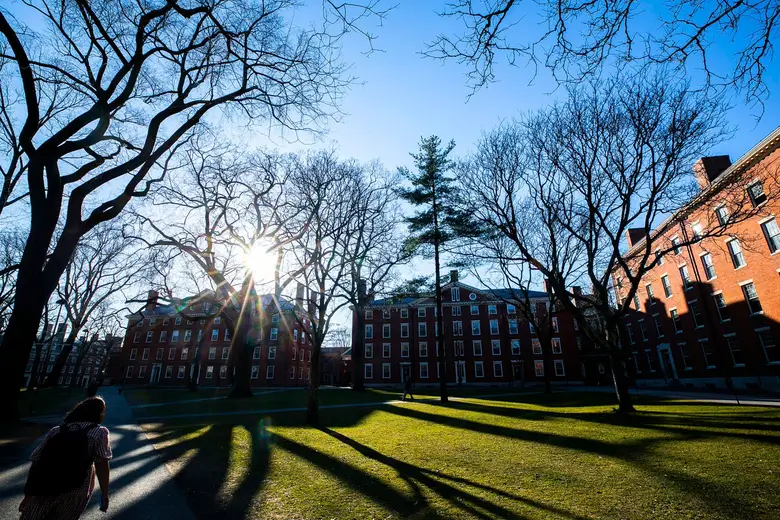
Harvard University’s announcement to broaden its financial aid program starting with the Class of 2026 marks a transformative step toward making elite education accessible to a wider range of students. As a former college applicant who navigated the daunting costs of higher education, I understand the relief such a policy can bring to families. This initiative, aimed at easing economic pressures, redefines affordability and opens doors for talented students from diverse backgrounds, ensuring that financial constraints don’t stand in the way of a Harvard education.
The Evolution of Harvard’s Financial Aid Commitment
Harvard’s financial aid journey began in earnest with the Harvard Financial Aid Initiative (HFAI) in 2004, targeting families earning $40,000 or less with full coverage of tuition, room, and board. Over the years, this threshold has risen incrementally, reflecting the university’s response to rising costs and economic realities. By 2023, it covered families earning up to $85,000, with scaled contributions for those up to $150,000.
The latest expansion, effective for the 2025-26 academic year, pushes the boundary further: families earning $100,000 or less will face no costs, while those earning up to $200,000 will receive free tuition plus additional aid based on circumstances. This move addresses the affordability gap for middle-income families, who often fall between the cracks of aid systems.
Since HFAI’s inception, Harvard has invested over $3.6 billion in undergraduate aid, with its annual budget growing from $80 million in 2005 to $275 million in 2025-26. This reflects a 190% increase, showcasing a sustained commitment to accessibility. The policy eliminates loans, replacing them with grants, easing post-graduation burdens.
My own college search was shaped by financial concerns, and hearing about such programs would have shifted my perspective. Harvard’s approach signals a priority to inclusivity, even amidst financial uncertainties like endowment challenges. It’s a beacon for other institutions.
Historical Context of HFAI
The HFAI launched in 2004 with a $40,000 threshold, raised to $60,000 in 2006, $65,000 in 2012, $75,000 in 2022, and $85,000 in 2023. Each increase responded to economic shifts, ensuring relevance. The 2025-26 leap to $100,000 and $200,000 thresholds is the most ambitious yet.
In 2007, Harvard eliminated home equity and retirement assets from aid calculations, reducing family burdens. By 2020, summer work expectations were replaced with grants, further easing costs. These steps show a progressive vision.
Details of the 2025-26 Financial Aid Expansion
Starting in fall 2025, Harvard will cover all billed expenses—tuition, fees, food, housing, health insurance, and travel—for families earning $100,000 or less with typical assets. This includes a $2,000 start-up grant for freshmen and a $2,000 launch grant for juniors to ease transitions.
Families earning up to $200,000 will receive free tuition, estimated at $58,800 for 2025-26, with additional aid for room ($12,922), board ($8,268), and fees ($5,126) based on need. This covers roughly 86% of U.S. households, a significant reach.
For families above $200,000, tailored aid considers unique circumstances, excluding home equity and retirement savings. This flexibility ensures fairness. In 2023-24, aided families paid an average of $15,700, far below the $82,866 sticker price.
I recall friends deterred by “sticker shock” at elite schools. Harvard’s policy counters this, making the full experience accessible. The grants for health insurance ($4,308) and travel further reduce hidden costs.
Key Components of the Aid Package
All students contribute $3,500 via term-time work, ensuring engagement without debt. Campus jobs are plentiful, from library roles to research assistants. This balances responsibility and support.
Start-up and launch grants address transitional costs, like move-in or career prep. These small but impactful aids reflect Harvard’s attention to detail. They ensure no student is sidelined by incidental expenses.
Impact on Accessibility and Diversity
Harvard’s policy aims to diversify its student body, which is wealthier than the U.S. average, with 45% of undergraduates paying full price. By covering 86% of U.S. households, it invites more first-generation and lower-income students.
In the Class of 2026, 20.3% were first-generation, and 20.5% qualified for Pell Grants, indicators of economic diversity. This expansion will likely boost these numbers, enriching campus perspectives.
President Alan Garber emphasized that diverse backgrounds foster intellectual growth. My own college experience was enriched by peers from varied economic backgrounds. Harvard’s move amplifies this dynamic.
International students, 13.9% of the Class of 2026, benefit equally under need-blind policies. This global reach ensures talent from 98 countries isn’t deterred by cost.
Benefits for Middle-Income Families
Middle-income families, often squeezed between wealth and poverty, gain significantly. The $200,000 tuition-free threshold addresses their “sticker shock.” It competes with public universities’ lower in-state rates ($11,000 average).
Personalized aid calculations ensure fairness, considering family size and expenses. This tailored approach makes Harvard viable for the middle class. It’s a game-changer for accessibility.
Navigating the Application Process for Aid
Applying for aid requires the FAFSA (code E00468) and CSS Profile (code 3434), with flexible deadlines around February 1 for Regular Action. Early filing ensures awards by April 1. Late submissions are accepted, easing stress.
Harvard’s Net Price Calculator estimates costs based on income and assets. I used similar tools during my applications, gaining clarity on affordability. It’s a practical starting point.
The Griffin Financial Aid Office offers one-on-one support, addressing unique circumstances. Email (faoweb@fas.harvard.edu) or virtual sessions via Crimson Connect provide guidance. This personal touch is invaluable.
Documents like tax returns and W-2s are key. Tracking begins mid-February via my.harvard.edu. Staying organized prevents delays in aid decisions.
Tips for a Smooth Application
Gather financial documents early to avoid last-minute scrambles. Digital copies streamline submissions. I learned this after missing a deadline elsewhere.
Use the Net Price Calculator before applying. It sets realistic expectations. Discuss results with family for alignment.
Challenges and Financial Context
Harvard’s $50.7 billion endowment supports this expansion, but 2024 saw a $151 million drop in contributions. A hiring freeze and potential federal funding cuts add pressure. Yet, the university prioritizes aid.
The 2025-26 aid budget of $275 million is a significant outlay amidst austerity. Dean Hopi Hoekstra called it a commitment to talent over financial constraints. This resilience is notable.
Federal policy shifts, like Trump’s funding threats, loom large. Harvard’s endowment buffers these risks, but long-term sustainability is a concern. The move reflects bold prioritization.
My family faced similar uncertainties with aid at other schools. Harvard’s transparency and grant-based model would have eased our worries. It’s a model of stability in turbulent times.
Navigating Financial Uncertainties
Monitor policy updates via Harvard’s financial aid site. Changes in federal funding could affect aid structures. Staying informed is key.
Engage with financial aid officers early. Their expertise clarifies complex scenarios. Proactive communication mitigates risks.
Implications for Other Institutions
Harvard’s move may pressure peers like MIT, which expanded aid to $100,000-income families in 2024. Elite schools with large endowments might follow suit. It sets a new standard for accessibility.
Public universities, with lower in-state tuition, face competition as Harvard’s aid rivals their costs. Liberal arts colleges like Amherst also offer generous aid, but Harvard’s scale amplifies impact.
The policy could reshape applicant pools, drawing more middle-income students to elite institutions. This shift may diversify campuses broadly. It’s a ripple effect worth watching.
I saw friends choose state schools for cost, but Harvard’s policy might have swayed them. It challenges the narrative that elite education is only for the wealthy.
Potential Industry Shifts
Smaller colleges may struggle to match Harvard’s aid levels. Their response could involve merit-based scholarships. Students benefit from increased options.
Advocacy for federal aid reform may grow, inspired by Harvard’s model. It highlights the need for broader accessibility. Policy discussions could intensify.
Student and Family Perspectives
For students, this policy removes financial barriers, allowing focus on academics and extracurriculars. The $2,000 grants ease transitions, from move-in to career prep. It’s a holistic approach to inclusion.
Families gain peace of mind, knowing costs are manageable. The average $15,700 contribution for aided families is a fraction of the $86,000 total cost. This affordability shifts perceptions of elite education.
First-generation students, like some I knew, often feel priced out of top schools. Harvard’s policy signals they belong, boosting applications. It’s a powerful message of inclusion.
International families benefit equally, with 13.9% of the Class of 2026 from abroad. Need-blind admissions ensure global talent thrives. This levels the playing field.
Real-Life Impact
A friend’s family, earning $120,000, avoided elite schools due to cost fears. Harvard’s new thresholds would have made it free, changing their calculus. Stories like this highlight the policy’s reach.
Virtual events like Crimson Connect engage families directly. These platforms clarify aid, building trust. They’re a lifeline for hesitant applicants.
Preparing for the Future
Prospective students should use Harvard’s Net Price Calculator to estimate costs. It accounts for income, assets, and family size. Early exploration sets clear expectations.
Gather documents like tax returns now to streamline applications. The CSS Profile and FAFSA are straightforward but require organization. I learned this the hard way with last-minute filings elsewhere.
Engage with the Griffin Financial Aid Office via email or Crimson Connect. Their personalized approach addresses unique needs. It’s a resource worth leveraging.
Monitor deadlines, especially February 1 for Regular Action. Early submission ensures timely awards, easing decision-making. Preparedness is key to maximizing benefits.
Long-Term Planning
Discuss aid with family to align expectations. Transparency avoids surprises. It fosters collaborative planning.
Explore other schools’ aid policies for comparison. Harvard’s model sets a high bar, but options abound. Informed choices empower students.
Harvard’s financial aid expansion for 2025-26 is a bold step toward inclusivity, ensuring talent, not wealth, defines access to its halls. By easing economic barriers, it invites a diverse generation to shape their futures and enrich the university’s vibrant community.





Hi, this is a comment.
To get started with moderating, editing, and deleting comments, please visit the Comments screen in the dashboard.
Commenter avatars come from Gravatar.